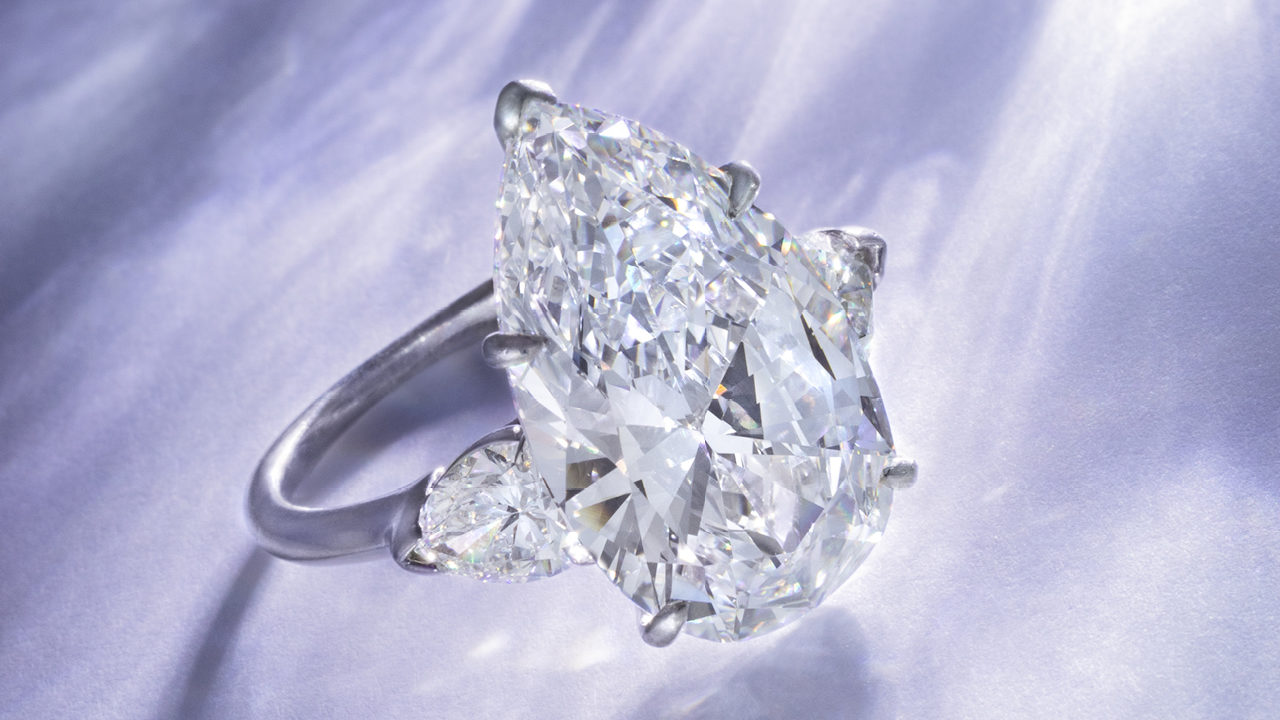The digital age is broadening bidders’ options and making purchases more accessible for global jewelry collectors.
Technology has transformed the auction market over the past decade. Bidders no longer need to be in the room — or even dial in — to make a purchase; instead, they can browse auction brochures, see videos, and read additional provenance reports from the comfort of their own homes before making an online bid. As a result, auction houses are shifting their strategies to enjoy the benefits of the digital age.
The internet and tools such as smartphone apps are improving the auction houses’ reach and the accessibility of their sales. Benoît Repellin, worldwide head of jewelry at Phillips, describes the past five years as having “yielded more change in the jewelry industry than the past 30,” thanks to the online boom.
“We have seen a steady increase in the proportion of lots sold online,” he adds. “On some occasions, more than half the lots in a live sale will sell to online buyers.”
At Bonhams, having a digital presence has led to “an increase of over 60% in sale registrations,” says Jean Ghika, the auction house’s global director of jewelry. “The accessibility of our online channels means that 42% of our hammer value comes from bidding via an online source, whether via our website or the Bonhams app.”
Similarly, online bids for jewelry at auctioneer Hindman in Chicago, Illinois, have risen approximately 25% year on year, according to Maggie Porter, its vice president of sales strategy, who adds that jewelry is currently “trending above all categories.”
Targeting new audiences
Moving the sales process to the web has also altered the typical demographic of auction participants. Ghika points to an “increasingly global bidding base,” noting that clients are “more likely to bid in auctions outside of their local region than [they were] this time two years ago.” This is also evident at Hindman, which has seen bidder engagement from more than 30 countries in its jewelry auctions this year.
The client base is also getting younger. At UK-based auction house Fellows, this has led to a shift in customer service tactics, according to business development manager Nicola Whittaker. Her team has changed its offering “in line with what people have come to expect from luxury e-commerce,” she relates. This includes a package of jewelry condition reports, photographs, virtual viewings, and shipping in bespoke packaging.
Progress and pitfalls
Auction houses must be adept in new technologies to compete effectively in the online arena. At Bonhams, Ghika and her team are exploring 360-degree jewelry photography and its power to engage buyers. Other houses are navigating apps and bespoke online sales platforms. Hindman launched a web and mobile bidding platform — the Digital Bid Room — in early 2021. The service lets clients livestream auctions and, with the corresponding app, track upcoming lots, receive push notifications, and leave absentee bids, among other features.
However, confirming the legitimacy of bidders without seeing them in person is an ongoing concern. So is guarding against digital security threats. “The more removed bidders are from the saleroom, the less control we as an auction house have over the unknown challenges that may arise,” Porter says.
But that’s not where the complexities end. “We have found that with digitization, the expectation is higher,” remarks Whittaker. “Many people expect the Amazon model of next-day delivery.”
The Hands-on factor
Although auctioneers see the need to compete in a world of digital convenience, jewelry remains a product category that benefits from in-person viewings. These will continue to be important, believes Sally Klarr — Hindman’s director and senior specialist for jewelry and watches — because they “often lead to clients eventually bidding from the convenience of their phones.”
But will the demand for a hands-on experience eventually come to an end? The Covid-19 pandemic has changed behavior to such an extent that while the “reference was [once] to view jewelry before buying, these barriers no longer exist, even at higher price points,” according to Ghika. If sales go up as the barriers come down, the future looks good for jewelry auctions.
Image: Hindman



